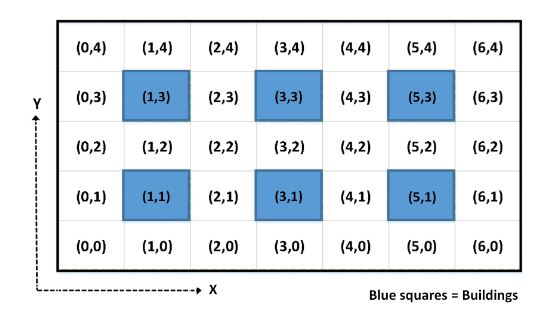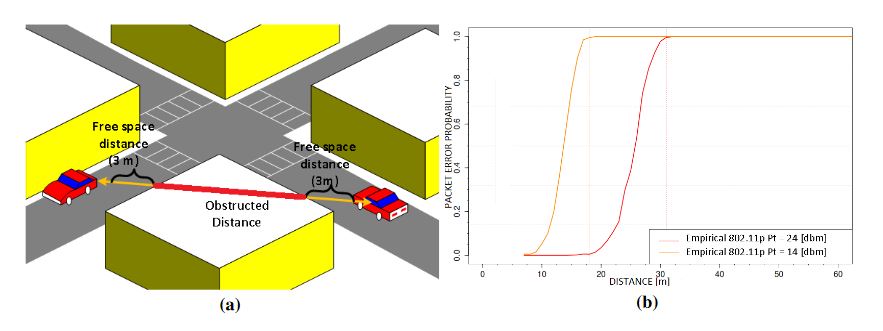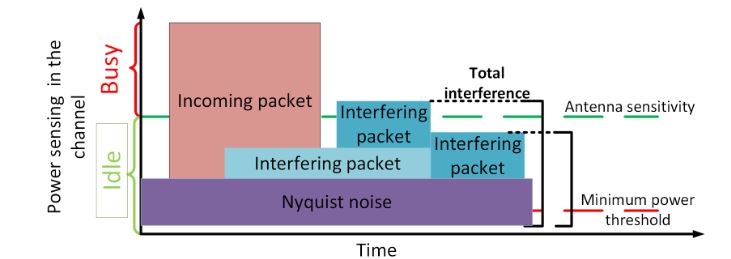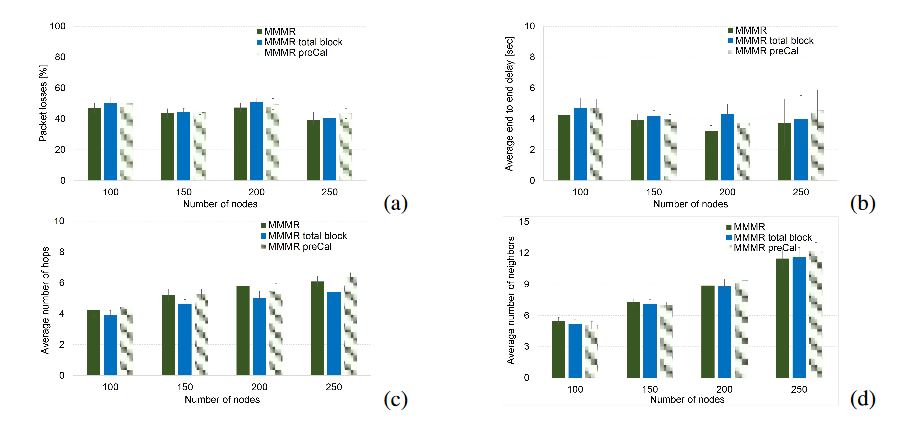ABSTRACT
Buildings are important elements of cities for VANETs, since these obstacles may attenuate communications between vehicles. Consequently, the impact of buildings has to be considered as part of the attenuation model in VANET simulations of urban scenarios. However, the more elaborated the model, the more information needs to be processed during the simulation, which implies longer processing times.
This complexity in simulations is not always worth it, because simplified channel models occasionally offer very accurate results. We compare three approaches to model the impact of buildings in the channel model of simulated VANETs in two urban scenarios. The simulation results for our evaluation scenarios of a traffic-efficiency application indicate that modeling the influence of buildings in urban areas as the total absence of communication between vehicles gives similar results to modeling such influence in a more realistic fashion and could be considered a conservative bound in the performance metrics.
RELATED WORK

Figure 1. Discrete positions of a vehicle in a Manhattan scenario proposed
In the authors considered three different states for the mutual positions between each transmitter and receiver devices: line-of-sight (LoS), near-line-of-sight (NLoS) and non-line-of-sight (nLoS). These states are used to categorize the existing condition between two nodes in a fast and straightforward fashion, by discretizing x,y positions into x*, y*.
Each one of these states, which depends on the line of sight from one node to another, is associated with an extra attenuation (EA). The possible discrete positions for a vehicle in a Manhattan grid scenario are shown in Figure 1. Equation (1) can be used to obtain the corresponding EA factor for two nodes in this scenario proposed by them.
EVALUATION OF BUILDING ATTENUATION MODEL

Figure 4. Packet error probability (PEP) behavior in an obstructed communication scenario
To detect the presence of buildings in the LOS of a communication path, we used the same idea, without having to compute all of the intersection points. However, sometimes, information about buildings is not available, and their influence is modeled in a conservative way, as is done. Figure 4b shows how the packet error probability (PEP) varies when the obstructed distance between two nodes increases, as shown in the scenario of Figure 4a.
SIMULATIONS AND RESULTS

Figure 6. State of the channel and interference management of a wireless channel for a node in a network simulator
If the power computed in the reception of a packet is lower than a minimum threshold, then the packet is discarded and it is not processed by the physical simulator’s module. This threshold is typically obtained as a small fraction of the Nyquist noise associated with the channel (see Figure 6).

Figure 8. Building attenuation model comparison (Barcelona scenario)
In this section, we present some results from comparing the simulations of the three aforementioned attenuation models: realistic, total blockage of signal and pre-computed attenuation. The evaluation is focused on four widely-used metrics applied to the performance analysis of VANET routing protocols. These metrics are the percentage of packet losses, average delay, average number of hops and average number of neighbors. Figures 8 and 9 illustrate these results for the four node densities in the two scenarios.
CONCLUSIONS
A statistical analysis has been performed in this work about the simulation of multi-hop vehicular ad hoc networks and, particularly, on how their performance metrics vary according to the attenuation effects obtained by modeling the presence of buildings in a VANET scenario. Our study compares three strategies to model the influence of buildings on the communication between vehicles. These strategies model this influence as the full attenuation of the communication signals, as a number of offline computed values of attenuation and as an inexpensive and accurate realistic propagation scheme.
The results we obtained support that the performance metric scores depend on the building attenuation model used in the simulations. Hence, the research community should use a realistic propagation model when possible. The differences in the performance reached with the realistic model, compared with the other two models, are at the maximum 3% for the percentage of packet losses and 0.5 s for end-to-end delay in our two different simulation scenarios, for the traffic-efficiency application tested in this work.
Furthermore, we could not find any statistical relationship between the vehicle density in the scenario (which may include a higher data traffic load) and the building attenuation model used, except by the average number of neighbors. Obstructed communications with higher capacity channels are less probable, and consequently, the resulting gap between a realistic building attenuation model and a total blockage of the signal should decrease when using higher capacity channels.
Future work may include testing the different channel capacities available in IEEE 802.11p in order to find out if the assumption of total attenuation differs from the realistic scenario for any channel capacity and average rate in the scenario. Furthermore, tests to empirically obtain the curve of the differences among the models in different types of scenarios is in the future work plan. Additionally, we are interested in testing different ways to map the continuous time into the discrete time for the offline attenuation files.
Source: University of Sinaloa
Authors: Luis Urquiza-Aguiar | Carolina Tripp-Barba | Jose Estrada-Jiménez | Monica Aguilar Igartua